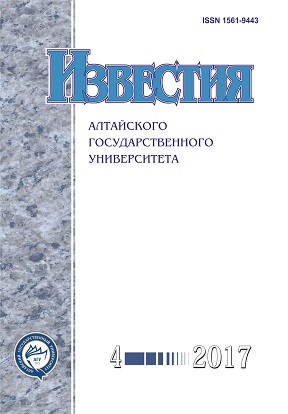Study of Mail Traffic Distribution Functions for Seasonality Hypothesis Confirmation
Abstract
In this paper, mail traffic distribution functions are studied using various statistical methods. Streams of unwanted e-mail messages (spam) and legitimate mail traffic are studied separately. The current state of the problem and similar studies are considered. It is concluded that there has been a significant increase in mail traffic in recent years and a change in its structure. As a hypothesis, an assumption is made about the "seasonality"(repetition of rise and fall time periods) of incoming e-mails. This hypothesis has been partially confirmed. The R/S analysis and the Hurst method are used to confirm the hypothesis. The analysis shows the presence of stable trends of legitimate mail traffic and wandering series tendency for unwanted e-mail traffic. In conclusion, there is a discussion of practical problems for which the obtained results can be applied.
DOI 10.14258/izvasu(2017)4-28
Downloads
Metrics
References
Будников К.И., Курочкин А.В., Лубков А.А., Яковлев А.В. Оценка датчиков мониторинга электронной почты с помощью синтетического теста transmail // Актуальные проблемы вычислительной и прикладной математики : труды Международной конференции, посвященной 90-летию со дня рождения академика Г. И. Марчука. — Новосибирск, 2015.
Email Statistics Report, 2010 // The Radicati Group, inc. [Electronic resourse]. — URL: www.radicati.com (дата обращения: 10.05.2017).
State of Spam & Phishing. A Monthly Report // Symantec corp. Report #53, [Electronic resourse]. — URL: http://www symantec.com/content/en/us/enterprise/other_resources/b-state_of_spam_and_phishing_report_05-2011.en-us.pdf (дата обращения: 10.05.2017).
Назаров Д. Режем спам. Дополнительные методы // Системный администратор. — 2005. — № 2 (27).
Терновой О.С., Жариков А.В., Шатохин А.С Применение метода Хёрста для определения сезонности сетевого трафика с целью раннего обнаружения DDOS-атак // Динамика систем, механизмов и машин. — 2016. — Т. 4, № 1.
Song Luo, Gerald A. Marin. Realistic internet traffic simulation through mixture mode ling and a case study // Winter Simulation Conference. 2005.
Jena K., Popescu A., Nilsson A. Modeling and Evaluation of Internet Applicati ons // International Teletraffic Congress ITC18. 2003.
Калашников С.Г. Анализ характеристик почтового трафика на примере мэи (ТУ) // Вестник МЭИ. — 2010. — № 2.
Эдгар Э. Петерс. Хаос и порядок. — М., 2000.
Данько Е.В. Функция субъективной полезности инвестиционных решений в условиях информационной неопределенности и метод оценки ее параметров // Вестник Новосибирского гос. ун-та. Серия: Информационные технологии. - 2015. - Т. 13, вып. 3.
Терновой О.С. Методика и средства раннего выявления и противодействия угрозам нарушения информационной безопасности в результате DDOS-атак // Известия Алтайского гос. ун-та. — 2013. — № 1/2 (77). D0I:10.14258/ izvasu(2013)1.2-24.
Copyright (c) 2017 О.С. Терновой, Е.В. Данько

This work is licensed under a Creative Commons Attribution 4.0 International License.
Izvestiya of Altai State University is a golden publisher, as we allow self-archiving, but most importantly we are fully transparent about your rights.
Authors may present and discuss their findings ahead of publication: at biological or scientific conferences, on preprint servers, in public databases, and in blogs, wikis, tweets, and other informal communication channels.
Izvestiya of Altai State University allows authors to deposit manuscripts (currently under review or those for intended submission to Izvestiya of Altai State University) in non-commercial, pre-print servers such as ArXiv.
Authors who publish with this journal agree to the following terms:
- Authors retain copyright and grant the journal right of first publication with the work simultaneously licensed under a Creative Commons Attribution License (CC BY 4.0) that allows others to share the work with an acknowledgement of the work's authorship and initial publication in this journal.
- Authors are able to enter into separate, additional contractual arrangements for the non-exclusive distribution of the journal's published version of the work (e.g., post it to an institutional repository or publish it in a book), with an acknowledgement of its initial publication in this journal.
- Authors are permitted and encouraged to post their work online (e.g., in institutional repositories or on their website) prior to and during the submission process, as it can lead to productive exchanges, as well as earlier and greater citation of published work (See The Effect of Open Access).








